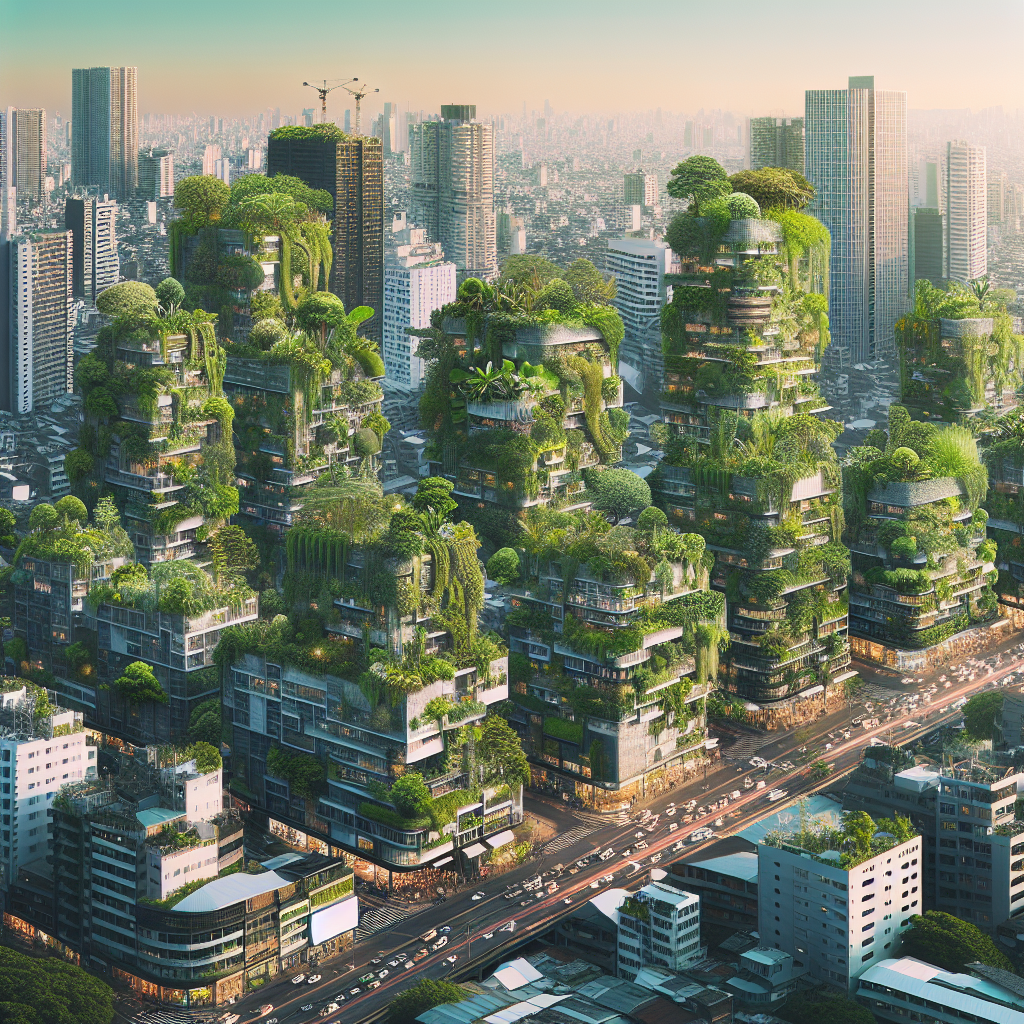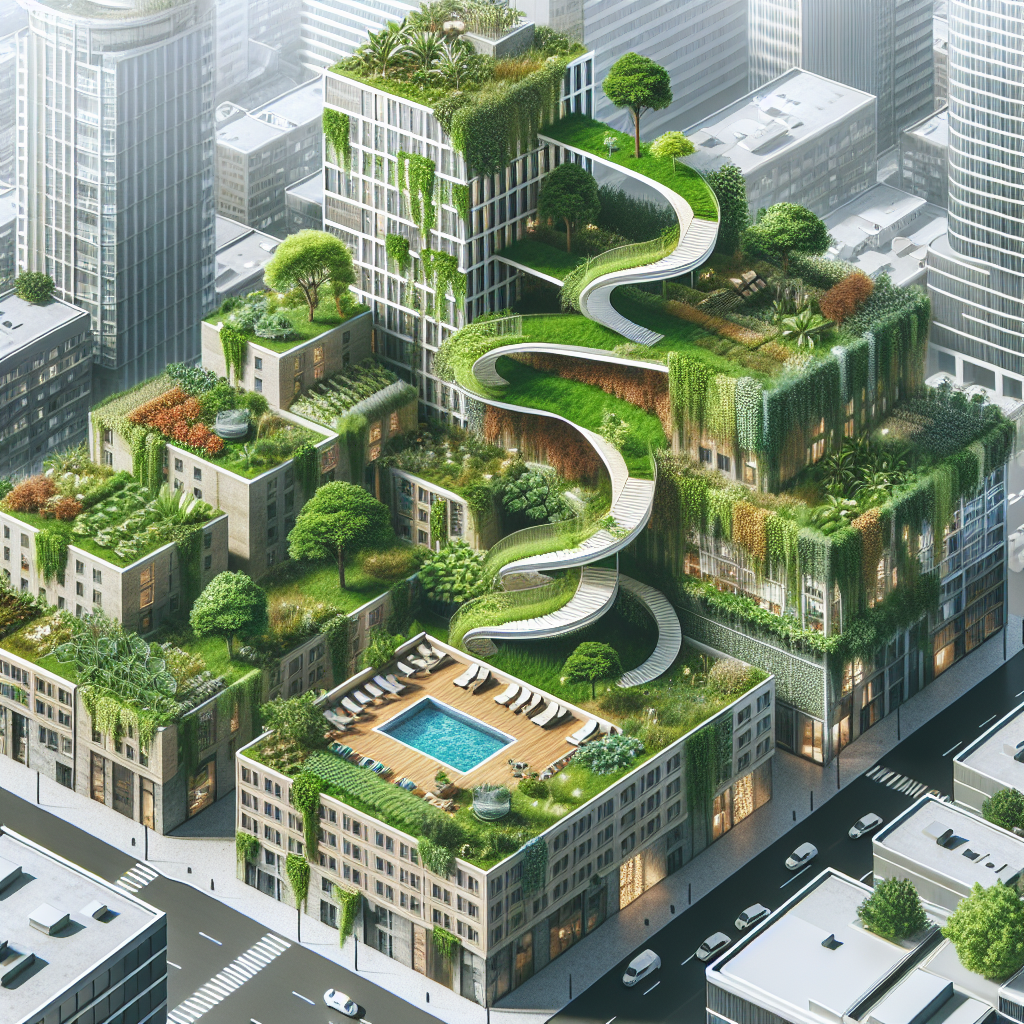URBAN JUNGLE: Alternative Ways of Greening our Urban Spaces
- Joshua Sayson Casio

- Aug 20, 2024
- 3 min read
In the concrete jungles of today's cities, a transformative movement is taking root, breathing life and beauty into our urban landscapes. The concept of the "Urban Jungle" is not merely about skyscrapers and bustling streets but about integrating nature seamlessly into our city environments. As we seek to create healthier, more sustainable communities, alternative ways of greening our urban spaces are becoming increasingly prevalent.
Reimagining Urban Spaces with Greenery

Today’s built environments can and quite often do cause stress. Most of the time the users of the space are unaware of these effects as a direct cause of their surroundings. Biophilic design is a solution to this issue, decreasing negative effects on people and nature alike, while facilitating the connection between the two. Architects and designers especially have a responsibility to recognize and utilize this deep-seated and innate connection, even as they begin to conceptualize new spaces.
Imagine walking down a bustling city street and being greeted by lush greenery cascading down buildings or vibrant plant life thriving in public spaces. This vision is becoming a reality as urban planners and architects embrace the power of plants to enhance our surroundings. By incorporating green walls, rooftop gardens, and pocket parks, cities are transforming into veritable urban jungles, creating havens of tranquility amidst the hustle and bustle.
Benefits of Embracing the Urban Jungle

The benefits of greening our urban spaces extend far beyond aesthetics. Plants play a crucial role in mitigating air pollution, reducing the urban heat island effect, and providing habitats for diverse wildlife. Additionally, green spaces have been shown to improve mental well-being, offering a much-needed respite from the stresses of city life. By embracing the Urban Jungle, we are not only beautifying our cities but also fostering healthier, more harmonious communities.
Then there are the psychological benefits. The cumulative body of evidence from more than a decade of research on the people-nature relationship proves that contact with vegetation is highly beneficial to human health and well-being. Whether contact with vegetation is active (gardening) or passive (viewing vegetation through a window), results show a consistent pattern of positive effects including:
- Psychological and physiological stress reduction
- More positive moods
- Increased ability to re-focus attention
- Mental restoration and reduced mental fatigue
- Improved performance on cognitive tasks
- Reduced pain perceptions and faster recovery in healthcare settings
Innovative Approaches to Urban Greening

In our quest to green urban spaces, innovative solutions are emerging to maximize the benefits of plant life in cities. Vertical gardens, hydroponic systems, and green facades are revolutionizing the way we incorporate greenery into our built environment. These cutting-edge technologies not only optimize space utilization but also promote sustainability by reducing water consumption and energy usage. As we look to the future, these alternative greening methods hold the key to creating thriving urban ecosystems.
Imagine a pedestrian pathway running through tended grasslands, canals and esteros reconverted to a linear park; farmers harvesting kale on the 20th floor of a condominium; roof gardens fertilized with local compost; a convention center that sits beneath a forested hillside; skyscrapers that use water from showers, tubs, and sinks to irrigate balcony arbors and planted walls; midtown streets shaded by hanging vines. On almost every street, you have a garden, maintained partly by the city and partly by the community, which drops the temperature, grows food, and provides shared space.
Embracing the Future of Urban Living
As we stand on the cusp of a new era of urban development, the Urban Jungle represents a paradigm shift in how we view and interact with our cities. By reimagining our urban spaces as vibrant, green oasis, we are forging a more sustainable and livable future for generations to come. Each plant that takes root in a city garden or climbs a skyscraper facade is a testament to our commitment to harmonizing nature and urban life.
In conclusion, the Urban Jungle is not just a concept; it is a movement towards a greener, healthier, and more vibrant urban landscape. By embracing alternative ways of greening our urban spaces, we are sowing the seeds of a brighter tomorrow, where nature and city life coexist in perfect harmony.
Let's continue to cultivate our Urban Jungle and watch as our cities bloom with life, color, and vitality.
With the Urban Jungle initiative gaining momentum, our cities are poised to become greener and more sustainable than ever before. Join us in this journey towards a brighter, greener future for our urban spaces.







Comments